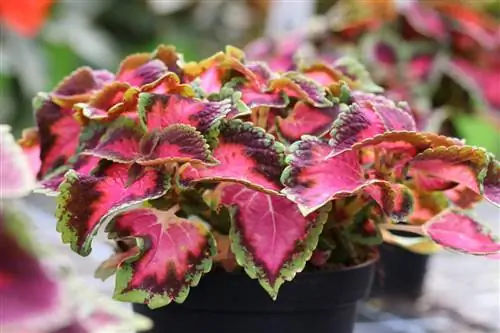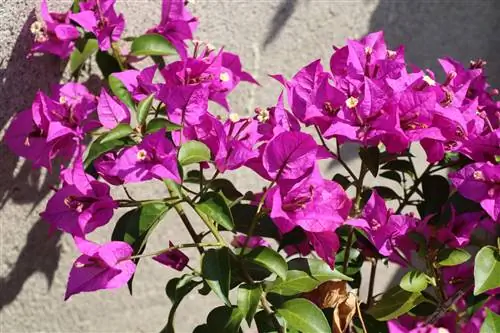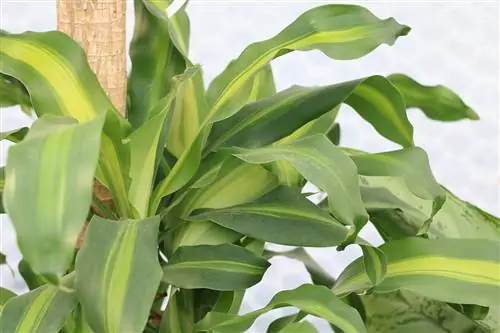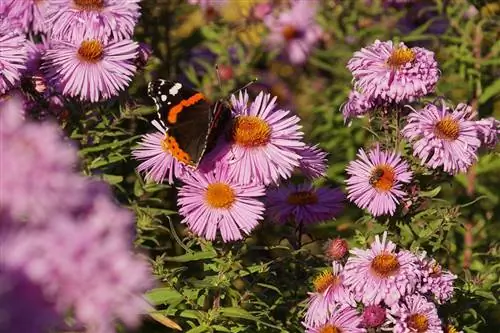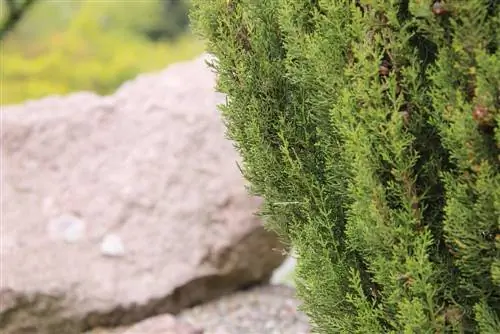- Author admin [email protected].
- Public 2023-12-17 03:39.
- Last modified 2025-01-24 12:45.
Coleus is particularly impressive with its attractive leaf colors and shapes and a large variety of varieties. Their appearance makes for a spectacular appearance as a pot or house plant because they are not hardy.
Hardy or not?
Coleus originally comes from regions where significantly warmer temperatures prevail. The climatic conditions in this country are therefore not optimal for these plants; it is far too cold. It doesn't even have to be frosty; even autumnal temperatures can cause irreparable damage. Frost is usually fatal for coleus.
Frost damage can no longer be corrected or repaired. When planted in a bed, coleus only grows as an annual. However, the plants can also be dug up and planted in pots over the winter. With appropriate overwintering and proper care, they can then be kept in a pot or as a houseplant for several years and develop into shrub-like plants about 80 cm high.
These pieces of jewelry can easily be left outside during the summer, but they must be put away again in good time.
Preparing for winter storage
In order to get these plants through the cold season, some preparation is necessary. They start in August.
- Stop fertilizing from the end of August
- don't start again until March
- also cut off the buds at the base in August
- no unnecessary power for the formation of seeds is lost
- Cleaning out plants that were outdoors in summer
- can prevent possible fungal diseases
- remove all wilted, dead or diseased plant parts
- check the coleus for pests
If there is a pest infestation, it should be removed before putting it into winter quarters. In some cases it can make sense to cut the plant back by around two thirds. This is particularly useful if space in the winter quarters is limited.
Time to put away
Since the coleus reacts sensitively to cooler temperatures, you shouldn't wait too long before putting it away. Definitely not until the first frost. At the latest when the temperatures approach the 15 degree mark, it is time to move into winter quarters. If they fall below this level permanently, the plant stops growing. The result is wilted leaves and even leaf fall. However, there is nothing wrong with bringing the coleus into the house much earlier.
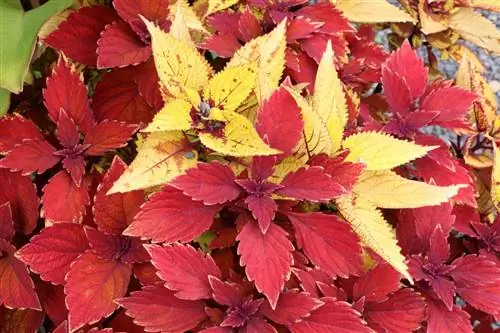
Care in winter quarters
As a rule, any room that is bright and at least 15 degrees warm is suitable as winter quarters. It shouldn't get any colder. A sunny window sill is very suitable, especially in terms of light output.
- Temperatures between 18 and 24 degrees are optimal
- Ensure sufficiently high humidity in heated rooms
- by spraying the plant every two to three days
- or setting up humidifiers
- water only very sparingly in winter
- Substrate should not dry out completely
- Watering quantity and frequency depending on prevailing temperatures
- the cooler the area, the less watering
- do not fertilize until spring
Tip:
The winter quarters should not be too warm due to the limited light intensity during the cold season. The heat would stimulate the metabolism, but the coleus cannot create new reserve substances that it needs for he althy growth.
Overwinter as an offshoot
A good alternative for a particularly space-saving winter storage is cutting and overwintering cuttings. This is also suitable for specimens that are already heavily woody and bare, for which overwintering is often no longer worthwhile. Cut off leafy, not yet woody shoots about 10 cm long. All leaves except the upper pair of leaves are removed and the cuttings are rooted in a glass of water. Once rooted, plant in small pots with potting soil and place in a cool, bright place over the winter. Care in winter corresponds to that of adult plants.
Errors during wintering
In the winter quarters, good ventilation should be ensured without causing drafts. Without sufficient ventilation, both fungal and animal pests such as spider mites, mealybugs and mealybugs have an easy time of it. They mainly occur when the heating air is too dry and warm in winter. The plants shouldn't be too close either.
Furthermore, the coleus should not be too dark, as this would result in the formation of long, thin, soft and weak shoots, so-called horny shoots. If you water too much in winter, there is a risk of waterlogging and root rot. Irrigation water that collects in saucers or planters should also be removed promptly. If this doesn't happen and the ball of the ball is permanently wet, it will cause cold feet, which could cause the coleus to take offense.
Tip:
Ideally, you should only use low-lime or lime-free water for watering.

